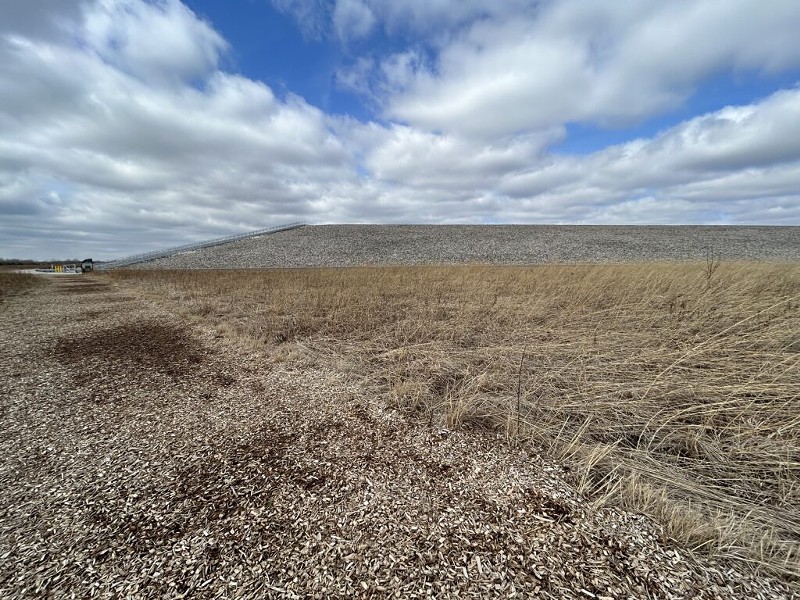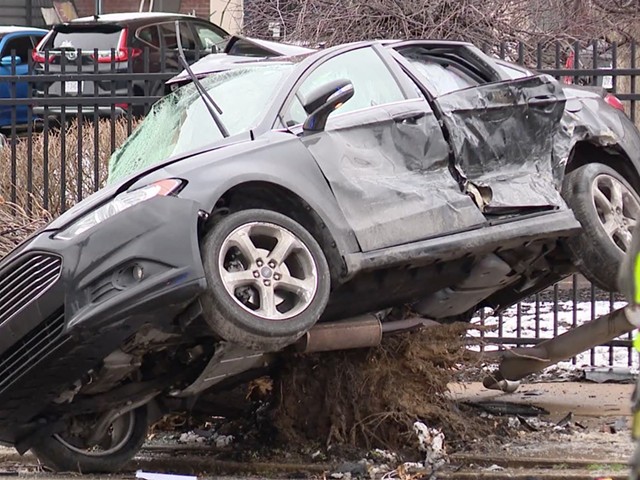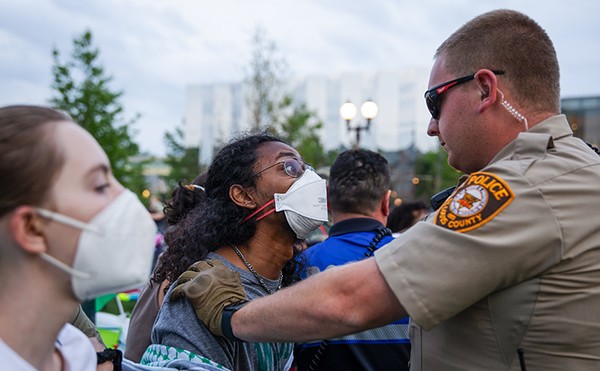
Missouri environmental regulators warned the federal government in 2021 that radioactive contamination of groundwater from a uranium processing site near St. Louis wasn’t improving despite cleanup efforts, according to documents reviewed by the Missouri Independent and MuckRock.
Officials with the Missouri Department of Natural Resources wrote a letter to the U.S. Department of Energy in May 2021, responding to the agency’s five-year review of its cleanup efforts at a Weldon Spring site where uranium was refined during the Cold War.
While the radioactive waste and contaminated debris from the processing site have been contained, Missouri regulators noted that contamination to the surrounding groundwater wasn’t getting better.
“The (state) disagrees that the remedy is functioning as intended,” wrote Taylor Grabner, who at the time was serving in the federal facilities section of the Missouri Department of Natural Resources.
The letter, which has not been reported publicly, is the latest example of Missouri officials pushing the federal government to do more to protect the health of St. Louis-area residents near the litany of World War II and Cold War-era nuclear sites in the region.
A six-month investigation by the Independent, MuckRock and the Associated Press found that federal agencies and private companies, for decades, downplayed concerns about radiological contamination or failed to investigate it fully at sites in St. Louis and St. Charles counties.
The state’s dour opinion of the federal cleanup in Weldon Spring was revealed in a document obtained by state Representative Tricia Byrnes through Missouri’s Sunshine Law and provided to the newsrooms. Byrnes plans to hold a town hall meeting next month so the community can learn about cleanup efforts.
St. Louis and surrounding areas played a key role in the development of the first atomic bomb during World War II. Uranium processed in downtown St. Louis was used in the first sustained nuclear reaction in Chicago. After the war, Mallinckrodt, which operated the downtown plant, started similar operations at a new facility on Missouri Highway 94 just north of the Missouri River.
The more than 200-acre site has been contaminated for decades by radium, thorium and uranium as well as dangerous non-radioactive chemicals from its use to manufacture explosives and process uranium ore.
The Weldon Spring plant was demolished and the debris buried, along with residue leftover from uranium processing, in a 41-acre containment cell covered with rock. The containment cell, the highest point in St. Charles County, is accessible to the public and has a monument to the communities displaced by the war effort and information on the cleanup effort at the top.
Closer to the Missouri River, a quarry the federal government used to store radioactive waste was also contaminated. It’s separated from the main site but part of the same cleanup and monitoring effort.
Remediation of the plant is complete, but for years the contaminated groundwater has only been monitored. In recent years, that monitoring has shown uranium contamination is not decreasing.
“The [state] has consistently expressed concern that further delineation of contamination … was necessary to better define the extent of groundwater contamination,” Missouri officials wrote in 2017.
It’s unclear whether conditions at the Weldon Spring site have improved since 2021.
The Department of Energy declined to answer questions directly but supplied a letter it sent in response acknowledging the state’s concerns. In its 2021 annual report, the agency said it would “evaluate alternative solutions for removing residual uranium sources and restoring groundwater.”
The Environmental Protection Agency shared some of the state’s concerns that the groundwater monitoring network was insufficient and the groundwater is not projected to be restored in a reasonable timeframe. But the agency said the publicly-accessible areas nearby, including state conservation areas and trails, are safe “for their intended use of recreation.”
The Missouri Department of Natural Resources did not answer questions from journalists about its letter.
Missouri regulators outlined a number of shortcomings in the draft five-year review, including that “the remedy is not projected to meet the (objective) of restoring groundwater to its beneficial use within a reasonable timeframe.”
The state said its federal counterparts with the Environmental Protection Agency had “mentioned numerous times” that the site is only “short-term protective.”
Beyond that, the state says, the extent of the contamination hasn’t been sufficiently defined, meaning it could be more widespread than the Department of Energy knows based on its sampling. The federal sampling program, the state argues, is inadequate.
Uranium levels in the slough next to Femme Osage Creek aren’t decreasing, the state noted. A public lake has levels of uranium slightly above what is natural.
Missouri regulators, in their letter, repeatedly corrected the Department of Energy when the federal agency said uranium levels were falling in groundwater wells at the site.
In a response to the state, the federal government said it would revise its conclusion that the remedy was working.
“No, the remedy is not functioning as intended by the decision document,” the finalized review says. “The remedy is short-term protective, however there are early indicators of potential issues.”
While a spokesperson for the Missouri Department of Natural Resources said keeping citizens informed “is always a priority,” Byrnes said state officials should have alerted the public that they didn’t feel the remediation was working.
Elected last year, Byrnes swam in the contaminated quarry as a teen and attended Francis Howell High School, which is just down the road from the chemical plant site.
“Had I not specifically asked,” said Byrnes, a Wentzville Republican, “I’d still be in the dark.”
This story originally appeared in the Missouri Independent.
Subscribe to Riverfront Times newsletters.Follow us: Apple News | Google News | NewsBreak | Reddit | Instagram | Facebook | Twitter | Or sign up for our RSS Feed





